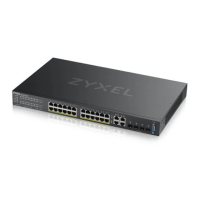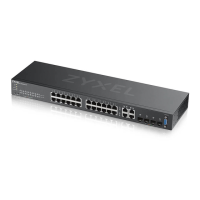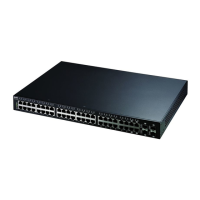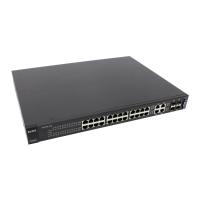Chapter 31 Layer 2 Protocol Tunneling
GS2220 Series User’s Guide
297
spanning tree, even though switch A is not directly connected to switches B, C and D. Topology change
information can be propagated throughout the service provider’s network.
To emulate a point-to-point topology between two customer switches at different sites, such as A and B,
you can enable protocol tunneling on edge switches 1 and 2 for PAgP (Port Aggregation Protocol),
LACP or UDLD (Uni-Directional Link Detection).
Fig ure 227 L2PT Network Example
31.1.2.1 La ye r 2 Pro to c o l Tunne ling Mo de
Each port can have two layer 2 protocol tunneling modes, Ac c e ss and Tunne l.
• The Ac c e ss port is an ingress port on the service provider's edge device (1 or 2 in
Figure 227 on page
297
) and connected to a customer switch (A or B). Incoming layer 2 protocol packets received on an
access port are encapsulated and forwarded to the tunnel ports.
• The Tunne l port is an egress port at the edge of the service provider's network and connected to
another service provider’s switch. Incoming encapsulated layer 2 protocol packets received on a
tunnel port are decapsulated and sent to an access port.
31.2 Co nfig uring La ye r 2 Pro to c o l Tunne ling
Click Adva nc e d Applic a tio n > La ye r 2 Pro to c o l Tunne ling in the navigation panel to display the screen
as shown.

